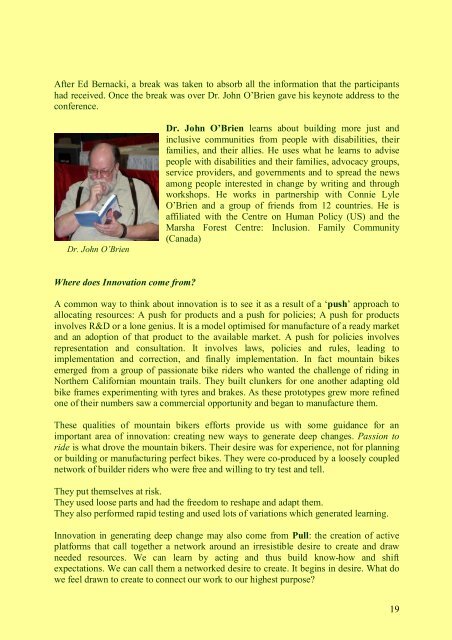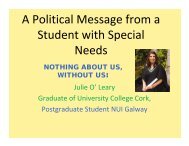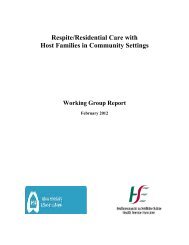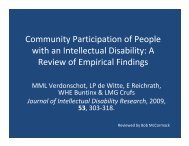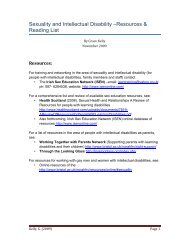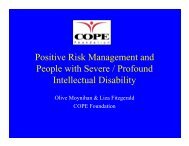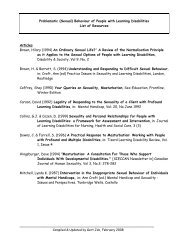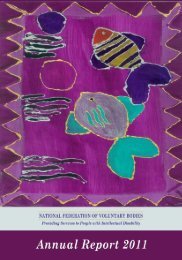Conference Proceedings Report - Final Draft - National Federation ...
Conference Proceedings Report - Final Draft - National Federation ...
Conference Proceedings Report - Final Draft - National Federation ...
You also want an ePaper? Increase the reach of your titles
YUMPU automatically turns print PDFs into web optimized ePapers that Google loves.
After Ed Bernacki, a break was taken to absorb all the information that the participants<br />
had received. Once the break was over Dr. John O’Brien gave his keynote address to the<br />
conference.<br />
Dr. John O’Brien<br />
Where does Innovation come from?<br />
Dr. John O’Brien learns about building more just and<br />
inclusive communities from people with disabilities, their<br />
families, and their allies. He uses what he learns to advise<br />
people with disabilities and their families, advocacy groups,<br />
service providers, and governments and to spread the news<br />
among people interested in change by writing and through<br />
workshops. He works in partnership with Connie Lyle<br />
O’Brien and a group of friends from 12 countries. He is<br />
affiliated with the Centre on Human Policy (US) and the<br />
Marsha Forest Centre: Inclusion. Family Community<br />
(Canada)<br />
A common way to think about innovation is to see it as a result of a ‘push’ approach to<br />
allocating resources: A push for products and a push for policies; A push for products<br />
involves R&D or a lone genius. It is a model optimised for manufacture of a ready market<br />
and an adoption of that product to the available market. A push for policies involves<br />
representation and consultation. It involves laws, policies and rules, leading to<br />
implementation and correction, and finally implementation. In fact mountain bikes<br />
emerged from a group of passionate bike riders who wanted the challenge of riding in<br />
Northern Californian mountain trails. They built clunkers for one another adapting old<br />
bike frames experimenting with tyres and brakes. As these prototypes grew more refined<br />
one of their numbers saw a commercial opportunity and began to manufacture them.<br />
These qualities of mountain bikers efforts provide us with some guidance for an<br />
important area of innovation: creating new ways to generate deep changes. Passion to<br />
ride is what drove the mountain bikers. Their desire was for experience, not for planning<br />
or building or manufacturing perfect bikes. They were co-produced by a loosely coupled<br />
network of builder riders who were free and willing to try test and tell.<br />
They put themselves at risk.<br />
They used loose parts and had the freedom to reshape and adapt them.<br />
They also performed rapid testing and used lots of variations which generated learning.<br />
Innovation in generating deep change may also come from Pull: the creation of active<br />
platforms that call together a network around an irresistible desire to create and draw<br />
needed resources. We can learn by acting and thus build know-how and shift<br />
expectations. We can call them a networked desire to create. It begins in desire. What do<br />
we feel drawn to create to connect our work to our highest purpose?<br />
19


